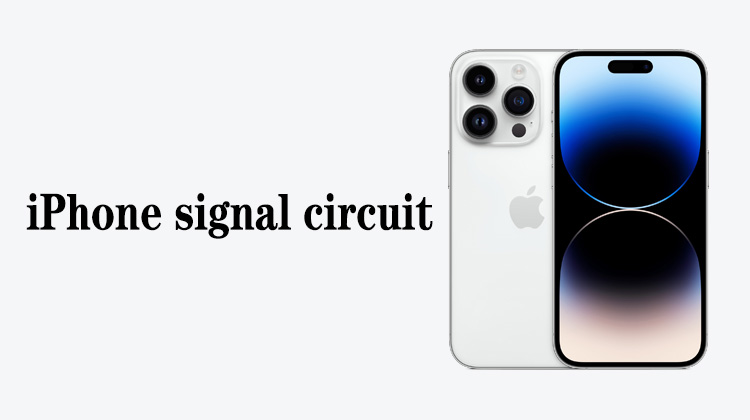1
00:00:01,366 --> 00:00:06,966
This lesson talks about the GSM 900 calling channel of Xiaomi mobile phone
2
00:00:08,266 --> 00:00:11,066
Take Mi 10 Pro as an example
3
00:00:11,800 --> 00:00:15,133
Open the circuit diagram of Mi 10 Pro
4
00:00:16,733 --> 00:00:20,800
Its antenna is generally on the first page of the drawing
5
00:00:23,933 --> 00:00:29,466
TX is transmit, RX is receive, TRX is transmit and receive
6
00:00:32,700 --> 00:00:38,466
The upper left foot tells us that the first page is the transceiver part of the main antenna
7
00:00:39,633 --> 00:00:43,900
In this circuit, we can use the method of elimination to find
8
00:00:44,333 --> 00:00:48,933
This is the antenna for WiFi, this is the antenna for 5G
9
00:00:49,433 --> 00:00:53,500
Then the remaining one is the antenna of ANT0
10
00:00:54,833 --> 00:00:59,300
This antenna has low band, mid band and high band
11
00:01:03,133 --> 00:01:07,100
Let's take a look at Xiaomi's GSM 900 channel
12
00:01:07,500 --> 00:01:11,200
J0204 is an antenna holder
13
00:01:12,766 --> 00:01:15,733
Antenna is mounted on the antenna
14
00:01:16,333 --> 00:01:20,033
Let's look at GSM 900 reception first
15
00:01:21,333 --> 00:01:26,766
The antenna converts the electromagnetic waves coming from the air into electrical signals,
16
00:01:26,766 --> 00:01:28,866
and then sends them to the seat
17
00:01:30,233 --> 00:01:38,566
The electrical signal is capacitively coupled and turned on by a 0 ohm resistor to form an antenna zero low, medium and high
18
00:01:39,366 --> 00:01:43,933
The low-band, mid-band, and high-band antennas are all here
19
00:01:44,233 --> 00:01:48,533
GSM 900 is in the low band so it's here too
20
00:01:49,700 --> 00:01:51,333
Let's see
21
00:01:55,200 --> 00:01:59,566
The receiving signal arrives at the seat J0304
22
00:02:00,200 --> 00:02:04,866
It is a coaxial switch, we also call normally closed contact
23
00:02:08,700 --> 00:02:12,166
This coaxial switch is factory tested
24
00:02:12,500 --> 00:02:18,666
Pin 2 and pin 1 of this coaxial switch are always on, in fact it is a wire inside
25
00:02:21,666 --> 00:02:29,566
After the received signal comes out from pin 1, it passes through the inductor and reaches the filter FL0301
26
00:02:36,300 --> 00:02:44,500
GSM 900 goes out from the 8-pin of the filter, and reaches the 8-pin of the S0308 through the inductor
27
00:02:50,066 --> 00:02:54,533
This is a Double Pole Double Throw switch, the same as Huawei's
28
00:03:01,900 --> 00:03:05,766
It forms a low-band antenna signal, LBANT
29
00:03:10,633 --> 00:03:15,133
This low band antenna signal contains GSM 900
30
00:03:18,933 --> 00:03:20,733
Let's look at the right
31
00:03:21,266 --> 00:03:26,666
Its RF3 pin and RF1 pin are turned on for a relatively long time
32
00:03:27,566 --> 00:03:31,433
Pin 2 is the signal from the diversity antenna
33
00:03:36,533 --> 00:03:40,633
This is a diversity reception, 2 and 4 are turned on
34
00:03:44,066 --> 00:03:49,400
We mainly look at the main set, which is the signal from pin 8 to pin 6
35
00:03:55,200 --> 00:03:57,600
Let's see where the signal goes
36
00:03:58,466 --> 00:04:04,600
The signal goes to pin 5 of the filter FL0600 and goes out from pin 2
37
00:04:11,233 --> 00:04:15,433
Then it reaches pin 2 of chip U0600
38
00:04:17,866 --> 00:04:23,866
The 2-pin is named as the antenna of the low frequency band, so GSM 900 must be here,
39
00:04:23,866 --> 00:04:27,733
because GSM 900 belongs to the low frequency band
40
00:04:30,466 --> 00:04:36,266
This is an antenna switch plus low-band power amplifier and 2G power amplifier chip
41
00:04:39,666 --> 00:04:47,133
After it comes in from pin 2, the internal switch is turned on, so that pin 2 is connected to pin 44
42
00:04:49,933 --> 00:04:56,433
Pin 44 is the receiver of B8, B8 receiver and GSM 900 take the same channel
43
00:04:57,433 --> 00:05:01,200
So here is the GSM 900 reception
44
00:05:02,466 --> 00:05:08,333
This is the GSM 900 line from antenna to power amplifier plus antenna switch
45
00:05:08,933 --> 00:05:10,800
That's all for this lesson






